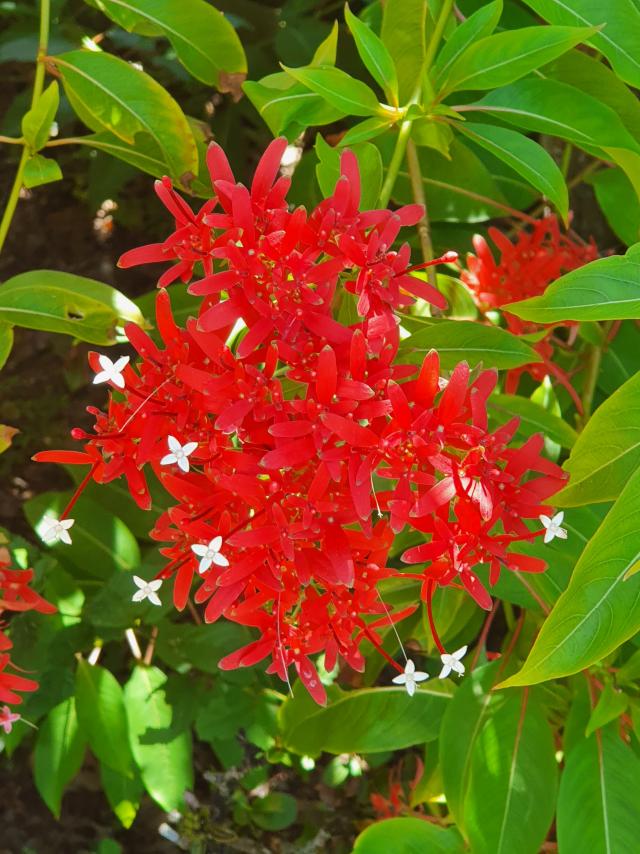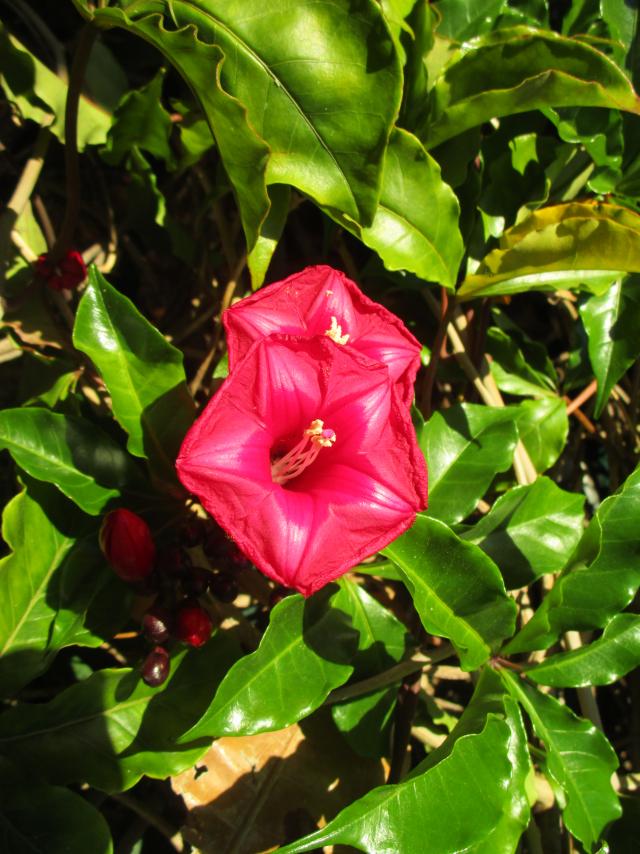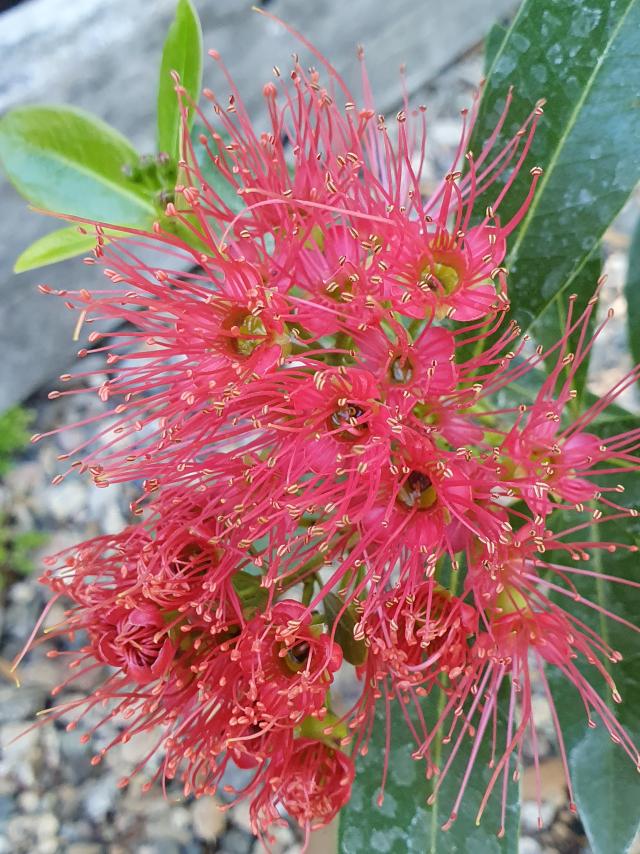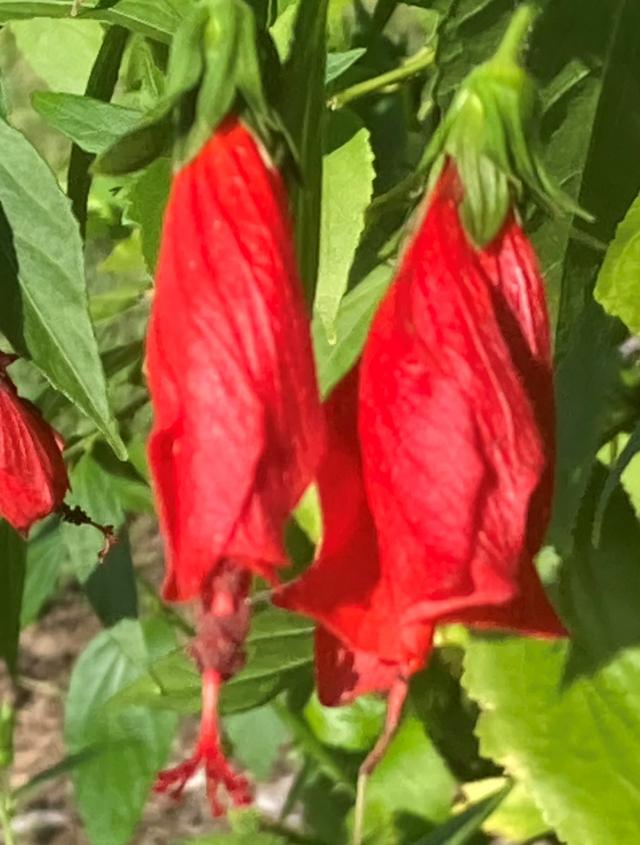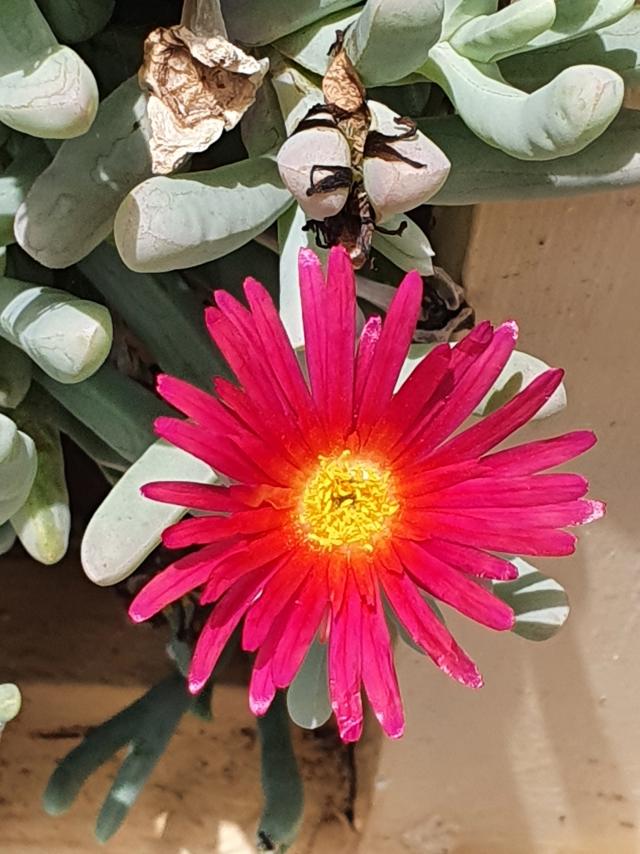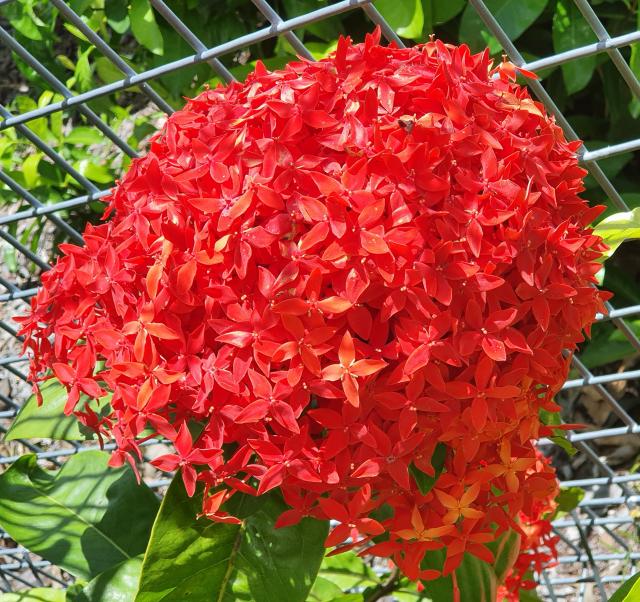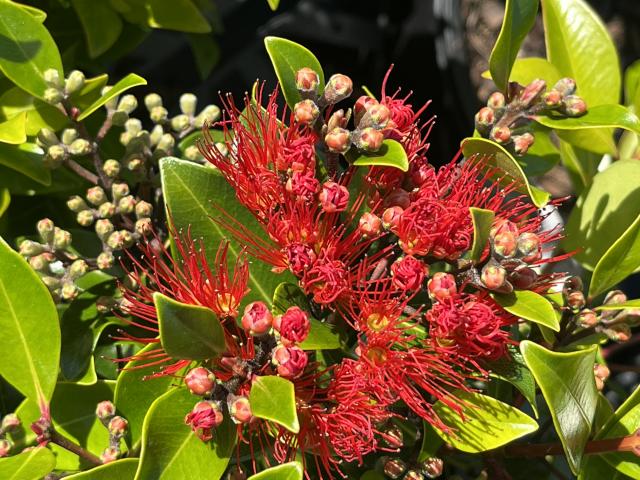With the storm rain that was received by many parts of the local region this week, it is still a good time to get out in the garden and plant new plants for summer.
Always around this time of the year, the bright red flowering plant creates a vivid display, and even the birds seem to be attracted to the red flowers over other colours in the garden.
Over the last few weeks, I have been receiving a number of enquiries about an attractive red flowering shrub that has been seen in numerous gardens around our part of Queensland.
The shrub is called Flaming Beauty or Carphalea kirondron and can be a rear showpiece in the garden.
In fact, like Bougainvilleas, the colour display of the Flaming Beauty comes from the strikingly bright red calyxes.
The flowers are white and only tiny, with four petals.
Regular pruning is necessary to promote a compact shape and repeat blooms.
I would also recommend the removal of the spent flowers or deadheading.
This is not a major job as Flaming Beauty flowers from November to almost July each year.
It is a medium-sized ornamental shrub that originated from Madagascar with an average height of one-and-a-half metres but in some positions, it can grow up to three metres.
The Flaming Beauty prefers a full sun position, but I have a number of showy plants growing just as well in semi-shade.
A well-drained soil mixture that is compost-enriched is needed to produce the best flowering display.
Other shrubs that will give your garden a great display of red include:
Ixora Super King is often referred to as the king of Ixoras due to its floral display.
Bright long lasting super-sized scarlet red flower heads that can easily reach 20cm across occur during the warmer months of the year.
This two-metre shrub with glossy dark green leaves would make an excellent screen plant or feature plant for a tropical garden.
Ipomoea horsfalliae or Cardinal Creeper, is a Creeper that deserves to be planted in more Central Queensland gardens.
The Ipomoea is a fast-growing tropical Creeper for pergolas, growing along fences or walls or even as a trellis feature.
The dense, lush tropical foliage of the Ipomoea forms a visible contrast to the Creeper’s trumpet flowers that will become submerged in ruby red to magenta-violet flowers.
Lampranthus Red Explosion is a dense low growing succulent trailing plant perfect for rock gardens on steep slopes or embankments.
During spring and summer, it has a profusion of vibrant red Daisy-like flowers.
These flowers will only last for a day, opening as soon as it receives the first rays of sunlight in the morning and finish flowering at sunset.
Lampranthus Red Explosion can grow to 40cm high and 1.2m wide and drought hardy and suitable for both coastal and outback gardens.
Malvaviscus arboreus or Turks Cap is a weeping red flowering shrub that is great under trees where you want some colour but will also take hot afternoon sun.
This shrub looks much like a hibiscus whose flowers are ready to open.
In fact, the flowers never open much, hence the common name of ‘Sleepy Hibiscus’.
The Turk’s Cap is drought-resistant and adaptable to clay, sand, sun, or shade and may take some frost.
Metrosideros collina Little Dugalds is a stunning small evergreen shrub with glossy, dark green leaves and bright green new growth.
Masses of bright red flowers are produced from spring right through to the end of summer providing plenty of nectar for the local native birds.
Growing to around 1.5m high also makes it a great low hedge plant.
This extremely versatile shrub can withstand a light frost, is wind, drought and salt tolerant, and can be grown in full sun or part shade.
Xanthostemon verdugonianus dwarf or Red Penda is a very showy compact shrub.
It bears clusters of red flowers that appear during the warmer months of the year.
The flowers are quite a bird and butterfly attractive.
It has a bushy habit with narrow, glossy, dark green leaves and prefers a sunny to semi-shaded position.
You can expect the Xanthostemon verdugonianus dwarf to grow up to three metres high and about two metres wide.
This native of Cape York Peninsula will grow best in Coastal areas.
These are just some of the spectacular blooming red plants growing in our local gardens.

